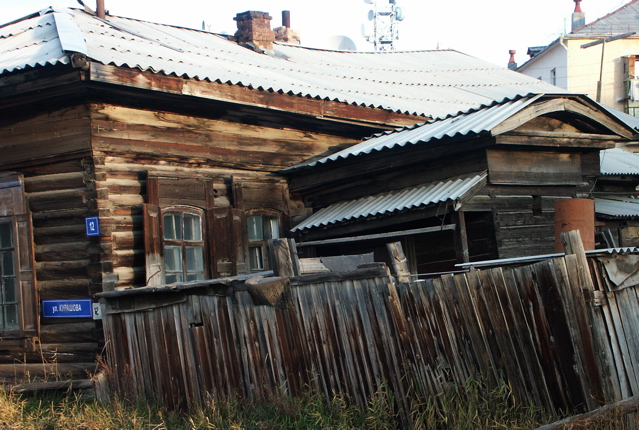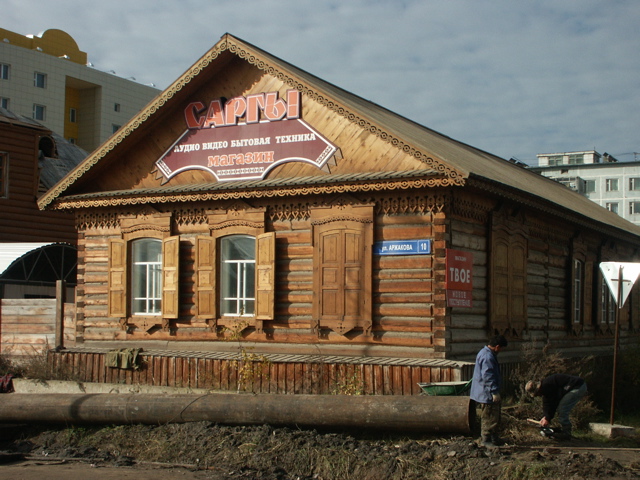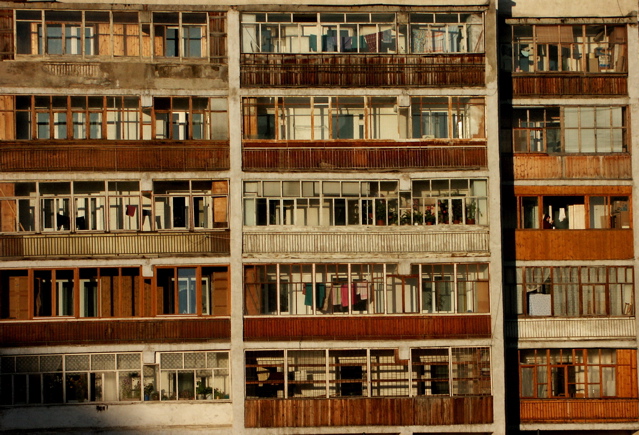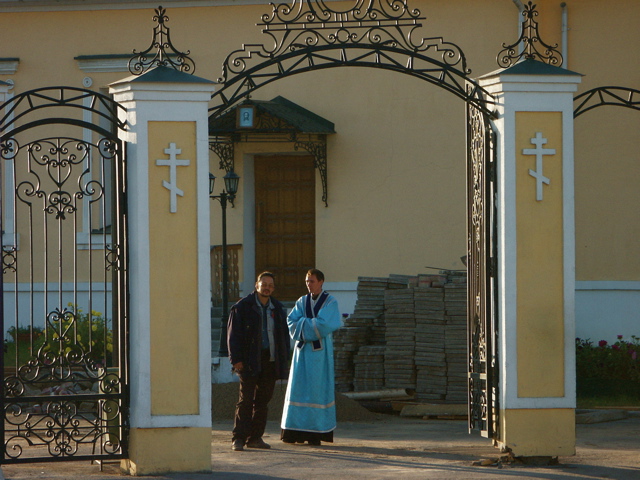
Yakutsk was founded in the 1600s by Cossacks, the advance guard of the expanding Russian empire. Nothing is left of the original town, but maybe the old log buildings scattered around the city are something like the original trading post. Many of them are literally melting into the ground, as the permafrost underneath them melts away.

But the old craftsmanship has not been completely forgotten -- I saw a number of new 'revival' buildings like this one, complete with elaborate scrollwork. My tourist map referred to this one as a salt shop.


Yakutsk II is personified in the Soviet-era prefab apartment blocks, although there are a number of other, more presentable buildings from the same era, housing offices, museums and the like. Under Soviet rule the little town on the river was developed into a small industrial city. Every apartment has a balcony, and in most cases the owners have scrounged up the materials to enclose it to gain a few square meters more interior space. Sheds welded out of heavy steel sheets line the rutted roadways and weedy lots between the apartment blocks, all with double padlocks the size of my fist. They seem to be used for overflow storage.

The Grado-Preobrazhenskaya Church was built in 1845, so it has survived the Soviet period in pretty good shape. Below, a Russian priest gets a little help in welcoming worshippers.

Yakutsk III is rising up amon the remains of the sunken log houses and crumbling apartment blocks: shiny modern buildings fuelled by money from Sakha's diamond and gold mines and oil and gas wells.


Put all three Yakutsks together and you get scenes like this, with the old Yakutsks giving way to the new.